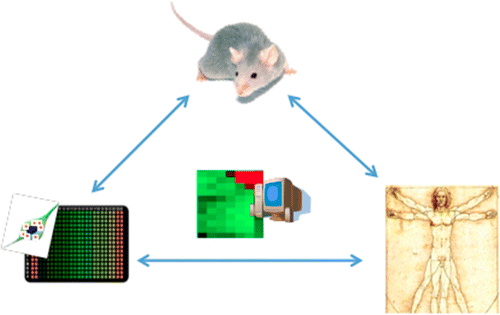New tests for determining health and environmental effects of nanomaterials

A group of international experts from government, industry and academia have concluded that alternative testing strategies (ATSs) that don't rely on animals will be needed to cope with the wave of new nanomaterials emerging from the boom in nanoscience and nanotechnology. Their consensus statement from a workshop on the topic appears in the journal ACS Nano.
Andre Nel and colleagues explain that many new engineered nanomaterials (ENMs) are appearing in laboratories, factories and consumer products as a result of advances in nanoscience and nanotechnology. These fields involve materials so small that hundreds would fit inside the period at the end of this sentence, and they have properties much different from larger particles of the same material. Tests on laboratory mice, rats and other animals have been the standard way of checking new materials for health and environmental effects. Since those tests are costly, labor-intensive and time-consuming, workshop participants considered whether ATSs could have a larger role in checking the safety of ENMs.
They concluded that rapid cellular screening, computer modeling and other ATSs could serve as quick, cost-effective and reliable approaches for gathering certain types of information about the health and environmental effects of ENMs. "After lively discussions, a short list of generally shared viewpoints on this topic was generated, including a general view that ATS approaches for ENMs can significantly benefit chemical safety analysis," they say.

The article is titled "A Multi-Stakeholder Perspective on the Use of Alternative Test Strategies for Nanomaterial Safety Assessment."
More information: A Multi-Stakeholder Perspective on the Use of Alternative Test Strategies for Nanomaterial Safety Assessment, ACS Nano, Article ASAP DOI: 10.1021/nn4037927
Abstract
There has been a conceptual shift in toxicological studies from describing what happens to explaining how the adverse outcome occurs, thereby enabling a deeper and improved understanding of how biomolecular and mechanistic profiling can inform hazard identification and improve risk assessment. Compared to traditional toxicology methods, which have a heavy reliance on animals, new approaches to generate toxicological data are becoming available for the safety assessment of chemicals, including high-throughput and high-content screening (HTS, HCS). With the emergence of nanotechnology, the exponential increase in the total number of engineered nanomaterials (ENMs) in research, development, and commercialization requires a robust scientific approach to screen ENM safety in humans and the environment rapidly and efficiently. Spurred by the developments in chemical testing, a promising new toxicological paradigm for ENMs is to use alternative test strategies (ATS), which reduce reliance on animal testing through the use of in vitro and in silico methods such as HTS, HCS, and computational modeling. Furthermore, this allows for the comparative analysis of large numbers of ENMs simultaneously and for hazard assessment at various stages of the product development process and overall life cycle. Using carbon nanotubes as a case study, a workshop bringing together national and international leaders from government, industry, and academia was convened at the University of California, Los Angeles, to discuss the utility of ATS for decision-making analyses of ENMs. After lively discussions, a short list of generally shared viewpoints on this topic was generated, including a general view that ATS approaches for ENMs can significantly benefit chemical safety analysis.
Journal information: ACS Nano
Provided by American Chemical Society
















